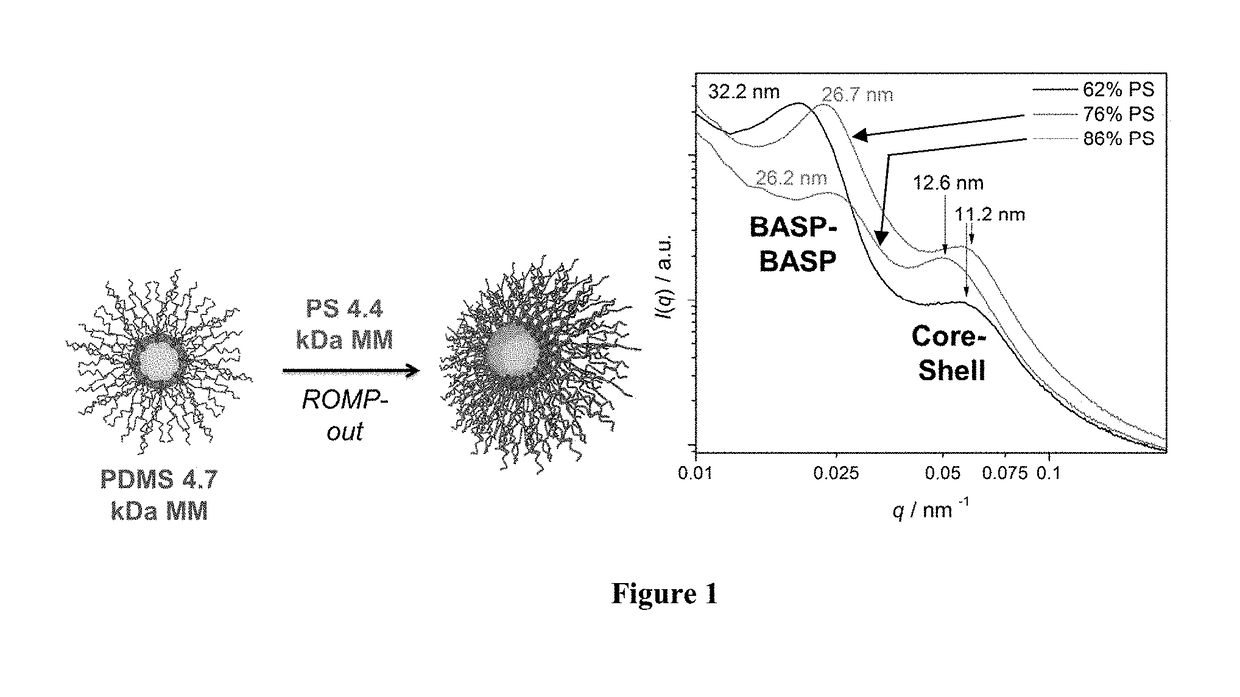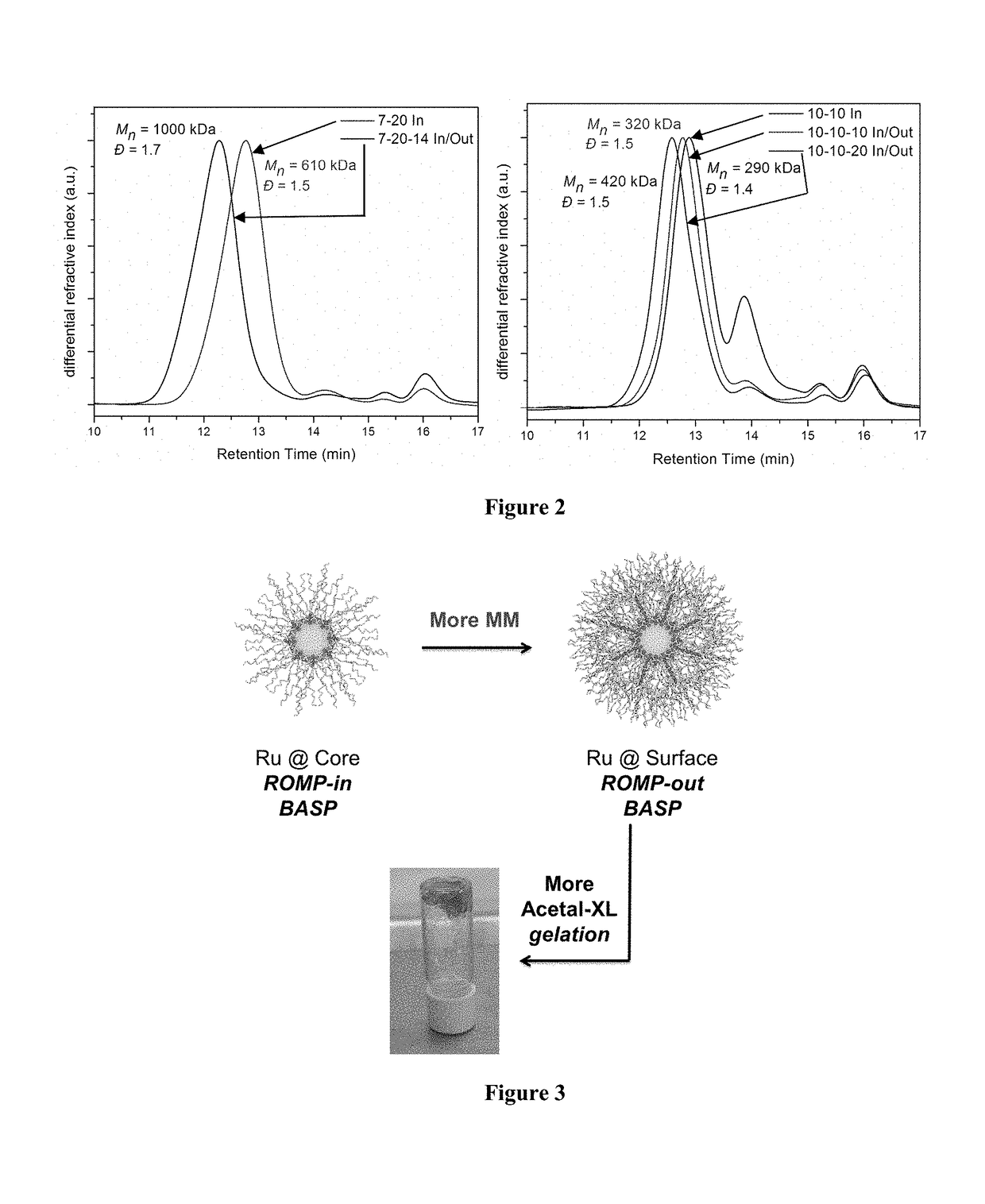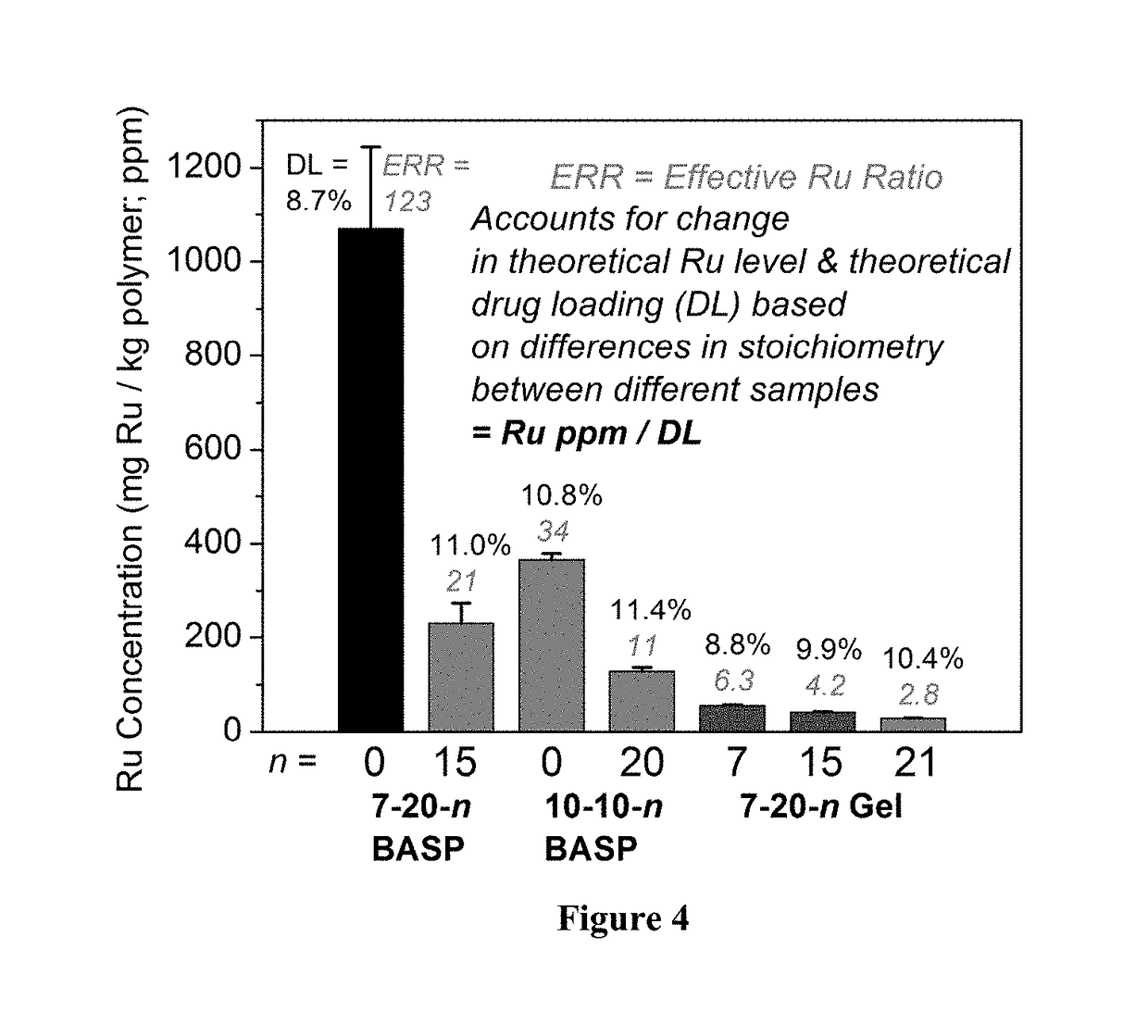Core-to-surface polymerization for the synthesis of star polymers and uses thereof
a polymerization and surface technology, applied in the field of core-to-surface polymerization for the synthesis of star polymers, can solve the problems of difficult removal of high levels of ruthenium in the dense basp microgel core, and the difficulty in synthesis of polymeric drug delivery vehicles free of transition metal catalyst impurities, and achieve the effect of reducing concentration
- Summary
- Abstract
- Description
- Claims
- Application Information
AI Technical Summary
Benefits of technology
Problems solved by technology
Method used
Image
Examples
example 1
rocedure for Synthesis of ROMP-Out BASP
Step 1: ROMP-in
[0309]To 2×1 mL vials charged with a Teflon-lined white cap was added PEG 3k MM (12.9 mg, 10 equiv). Care was taken to ensure the solid white PEG 3k MM (3244 g / mol) was added to the bottom of the vial and did not stick to the side and / or top of the vial. A stirbar was added to one of the two vials. Another 1 mL vial charged with a Teflon-lined white cap was charged with Acetal XL (35.7 mg; MW=580.6 g / mol). The vials were then brought into a N2 filled glovebox, whereupon anhydrous 1,4-dioxane (65 uL) was added via a micropipetter. Care was taken to ensure the solvent was added directly to the bottom of the vial on top of the white solid rather than down the side of the vial. The vial was capped and stirred gently (100-150 rpm) until the resulting viscous solution was homogenous. The vial can also be gently rolled between ones fingers to help facilitate dissolution of PEG 3k MM. Next, a stock solution of Grubbs III (20 mg / mL in anh...
example 2
unctionalization for the Synthesis of ROMP-Out BASP
[0313]Perform Step 1 and Step 2 as described in Example 1.
Step 3: ROMP-Out and Capping
[0314]After the crosslinking step reached ca. 100 min, the next portion of PEG 3k MM solution was added as a single stream via microsyringe (placed below the level of the reaction solution) from a stock solution of MM (at a concentration between 0.05M-0.1M). The density of the MM must be taken into account to track the volume change, which can by measured by observing the volume change of a stock solution. The reaction was allowed to proceed for 1 h. Nb-PNP (2 equiv, 0.05-0.1 M) was added in 1,4 dioxane and the mixture was stirred for ca. 20 min. The vial was then removed from the glovebox, uncapped, and 2 drops of ethyl vinyl ether were added. The reaction was capped and stirred for ca. 15-20 min. A suitable benzylic amine (i.e. benzyl amine or another benzylic amine with a functionalized aryl ring, 5 equiv) was added in equal volume DMSO. The rea...
PUM
| Property | Measurement | Unit |
|---|---|---|
| number average molecular weight | aaaaa | aaaaa |
| molecular weight | aaaaa | aaaaa |
| molecular weight | aaaaa | aaaaa |
Abstract
Description
Claims
Application Information
 Login to View More
Login to View More - R&D
- Intellectual Property
- Life Sciences
- Materials
- Tech Scout
- Unparalleled Data Quality
- Higher Quality Content
- 60% Fewer Hallucinations
Browse by: Latest US Patents, China's latest patents, Technical Efficacy Thesaurus, Application Domain, Technology Topic, Popular Technical Reports.
© 2025 PatSnap. All rights reserved.Legal|Privacy policy|Modern Slavery Act Transparency Statement|Sitemap|About US| Contact US: help@patsnap.com



